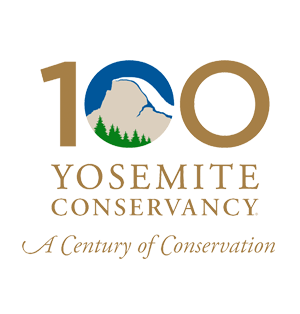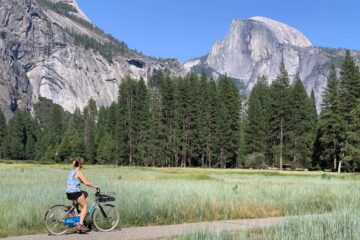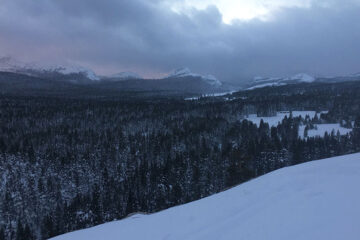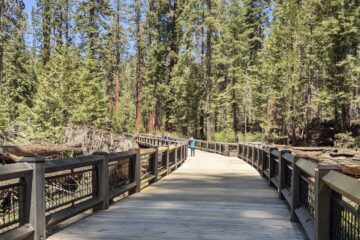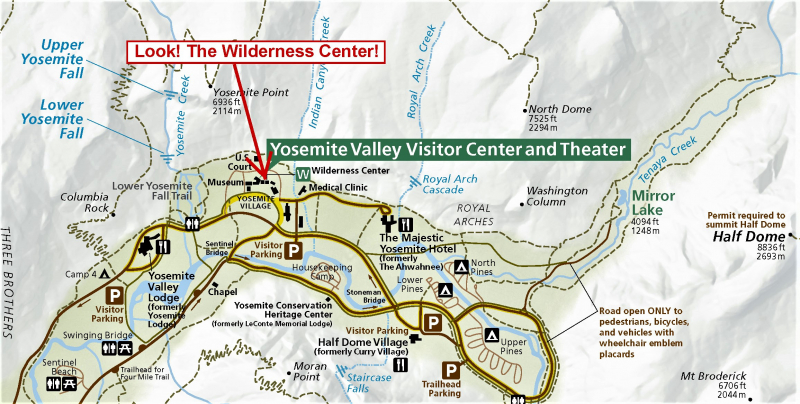 If you’ve ever wandered through Yosemite Village, you’ve probably passed by the Wilderness Center, a small log-framed building along the main path. Inside the cozy space, you’ll find maps, displays about backpacking best practices, and, on many days, Mark Scrimenti, our lead wilderness assistant. Mark works with a team of Conservancy and park employees to make sure people are prepared for their backcountry adventures.
If you’ve ever wandered through Yosemite Village, you’ve probably passed by the Wilderness Center, a small log-framed building along the main path. Inside the cozy space, you’ll find maps, displays about backpacking best practices, and, on many days, Mark Scrimenti, our lead wilderness assistant. Mark works with a team of Conservancy and park employees to make sure people are prepared for their backcountry adventures.
In 2015, we shared a piece of Mark’s Yosemite story in our magazine (“Grit and Granite,” Nov. 2015). We checked back in with him this summer to ask about life in the Village — and out on the trails — as part of the Wilderness Team.
What brought you to Yosemite?
Back in 2014, I was a recent college grad, living on the East Coast and on the conventional office job track. But I wanted to be doing work that I believed in; work that excited me and challenged me. That’s the dream, I think, for most people.
Right around then, I received an email seemingly out of nowhere inviting me to apply for the California Conservation Corps (CCC) Backcountry Trails Program in Yosemite. The program, which is supported by Conservancy donors, is highly immersive and physically daunting: participants live in the Yosemite backcountry for six months while working on trail rehabilitation projects, with minimal communication to the outside world. I was offered a slot, and took it without question.
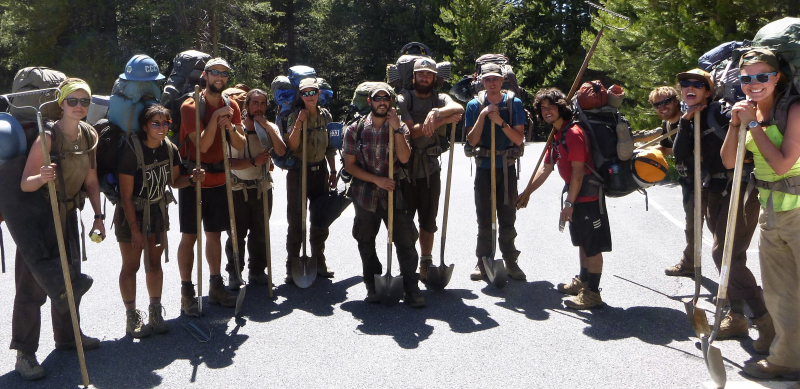
Living in the woods like that builds character, and I’m grateful for the lessons I learned. Now, I work in the Wilderness Center in Yosemite Valley, issuing hiking permits for the very trails I helped maintain. Working with the CCC gave me an expansive knowledge of the Yosemite backcountry which I now apply each day.
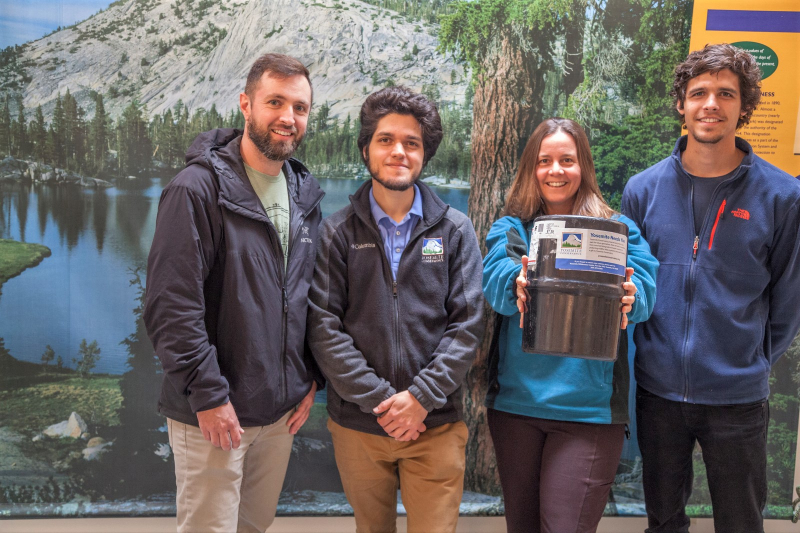 Tell us more about the Wilderness Center. What’s your role?
Tell us more about the Wilderness Center. What’s your role?
The Yosemite Wilderness Center, near the Yosemite Valley Visitor Center, is staffed by both National Park Service and Yosemite Conservancy employees. We handle all permits for overnight backcountry hiking. That includes John Muir Trail (JMT) hikes, some Pacific Crest Trail (PCT) hikes, overnight hikes to Half Dome … you name it. We also make sure hikers have approved bear-proof canisters to store their food. As you can imagine, there is never a dull moment in our office!
The demand for hiking in Yosemite has skyrocketed, especially in recent years. Every week in the summer, thousands of people visit the Wilderness Center — and many more contact us by phone and fax.
Many people don’t know that the winter is just as busy or busier for our team. During peak reservation season (six months prior to the start of a hike), we get around 1,000 applications per day for JMT trips alone. We can approve roughly a dozen, or just over one percent, of those applications. I’m thankful for the adept and knowledgeable team here that helps us get through each busy day!
Why do permits matter?
Permit systems are crucial for protecting the wilderness. As demand for backcountry experiences skyrockets, permit and quota systems allow parks like Yosemite to keep natural resources from becoming too impacted or damaged.
The Wilderness Act of 1964 defined wilderness, in part, as an area that “generally appears to have been affected primarily by the forces of nature” (rather than humans), and “has outstanding opportunities for solitude.” For the institutions that oversee designated wilderness areas, including the National Park Service, that means protecting not just the land within the wilderness boundaries, but also the quality of visitor experience in those places. That has become increasingly harder to do, it seems. In Yosemite and other backcountry areas, permit systems are essential for preserving, in the words of the Wilderness Act, “the benefits of an enduring resource of wilderness.”
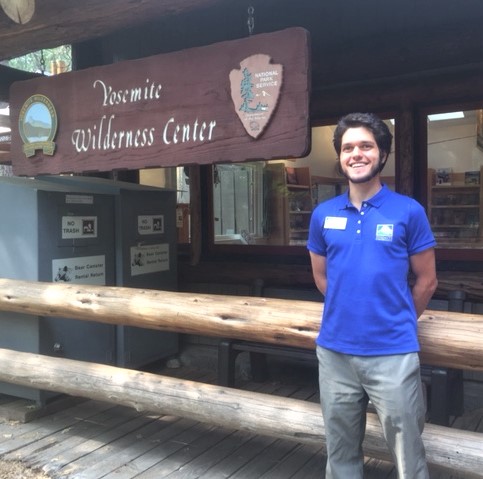 Any tips for planning a Yosemite backcountry trip?
Any tips for planning a Yosemite backcountry trip?
Do some research! Yosemite is a big park, the size of Rhode Island, and there is so much to experience. Most people only hear of certain things and funnel into the same heavily foot-trafficked areas. Spread out a map and look for lakes or peaks that you haven’t already heard of. Look at trail descriptions on sites like AllTrails or Yosemite Hikes. If you spend a bit of time investigating what else the park has to offer, beyond the most popular spots, I think you’ll find a more rewarding wilderness experience.
What are some of your favorite spots in the park?
I love upper montane and subalpine regions, meaning elevations of roughly 7,000-11,000 feet. There’s something about the air up there, and the stillness. It can take some trekking, but anything in the higher elevations and in the northern part of the park will offer something special. I call 7,000-8,000 feet the “Goldilocks elevation.” Everything up there seems just right.
Anything closing thoughts?
It’s a beautiful park. Respect it, protect it, backpack it!
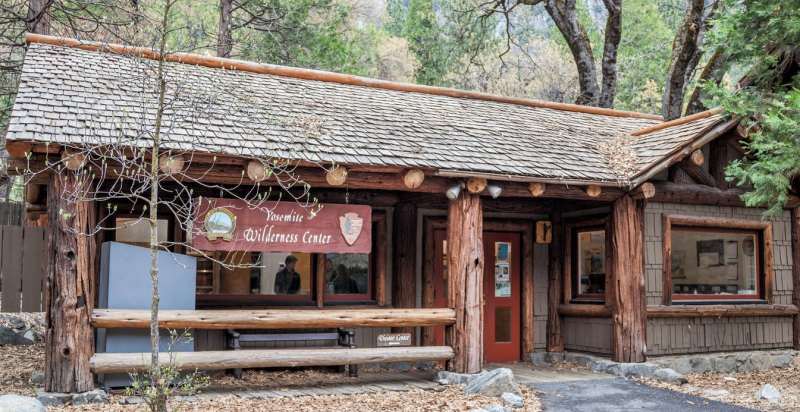
On that note, take a look at our post on ways to “Leave No Trace” as you explore the outdoors, and read our Backpacking Basics blog to brush up on tips for planning, packing and enjoying your next trip. Before you hit the trail, stop by the Wilderness Center to pick up your permit, rent a bear-proof canister, and say hi to the team!
